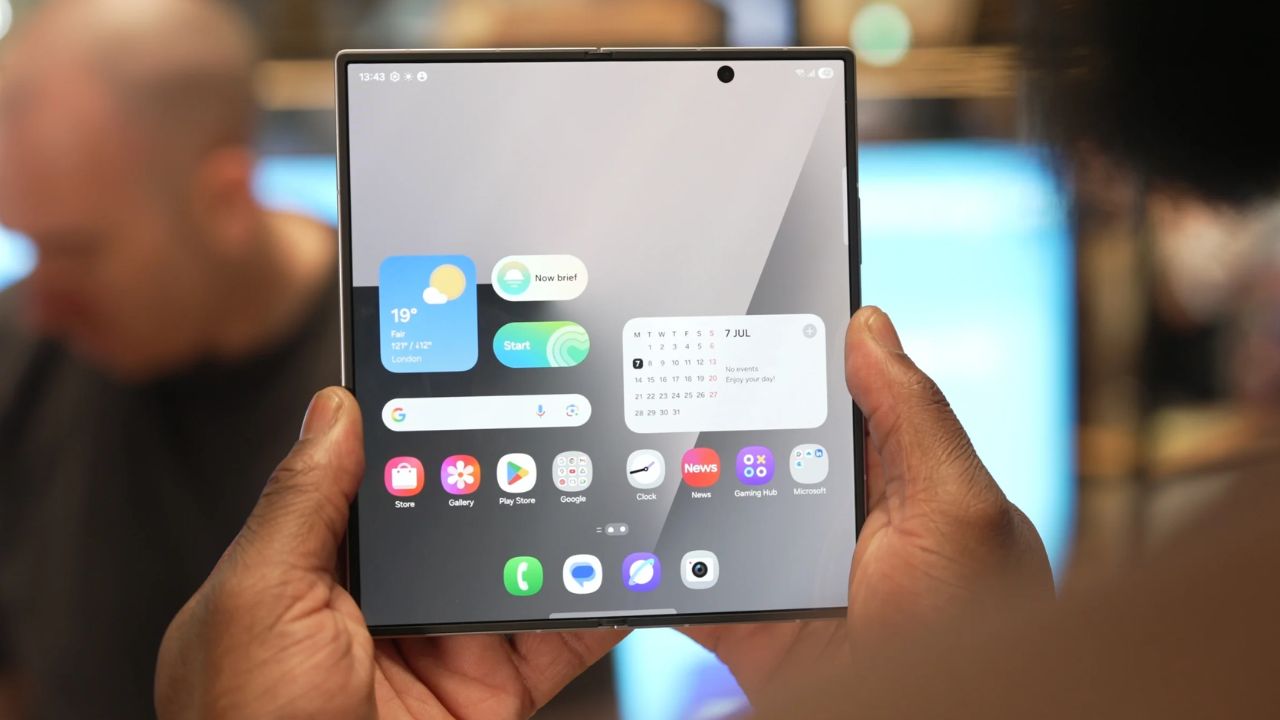The world of foldable smartphones never stops evolving, and Samsung continues to lead the charge with its Galaxy Z Fold series. However, recent reports from Korea suggest that the upcoming Galaxy Z Fold 8 might face an unexpected challenge that could affect the premium experience users have come to expect.
The Current State: Galaxy Z Fold 7’s Premium Appeal
Samsung’s latest Galaxy Z Fold 7 represents a significant step forward in foldable technology. One of its standout features is the titanium backplate that provides structural support for the foldable display. This isn’t just about looks – the titanium construction delivers genuine benefits that users can feel in their daily experience.
The titanium backplate offers superior structural rigidity compared to previous models, making the device feel more solid and reliable when folding and unfolding. More importantly for everyday users, it allows Samsung to create a thinner and lighter profile without compromising durability. When you’re carrying a device this size, every gram matters, and the premium feel in your hands is immediately noticeable.
This same titanium construction also appears in the Galaxy Z Fold Special Edition, showing Samsung’s commitment to premium materials across its high-end foldable lineup.
The Potential Setback: Why Galaxy Z Fold 8 Might Go Backward
Supply Chain Challenges Beyond Samsung’s Control
Here’s where things get complicated for Samsung – and potentially disappointing for consumers. According to recent reports, Samsung may be forced to abandon titanium for the Galaxy Z Fold 8, not because they want to cut costs or change their design philosophy, but due to external factors completely outside their control.
The primary culprit appears to be supply chain disruptions affecting titanium availability. Specifically, Samsung may face difficulties sourcing titanium from Chinese suppliers, which has been a reliable source for this premium material. This challenge stems from ongoing trade disputes between the United States and China, creating ripple effects throughout the global tech industry.
The Alternative: A Return to Carbon Fiber-Reinforced Plastic
If Samsung cannot secure adequate titanium supplies, they’re likely to return to carbon fiber-reinforced plastic (CFRP) for the Galaxy Z Fold 8’s backplate. This material isn’t necessarily bad – in fact, Samsung used CFRP successfully in all Fold models from the Galaxy Z Fold 3 until this year’s switch to titanium.
However, going backward in materials represents a step down in terms of premium feel and potentially device performance. While CFRP served Samsung well in previous generations, users who’ve experienced the titanium construction of the Fold 7 might notice the difference.
What This Means for You as a Consumer
Impact on Device Experience
If Samsung does revert to CFRP for the Galaxy Z Fold 8, you might notice several changes in your daily experience:
The device could feel slightly heavier compared to the Fold 7, as titanium’s strength-to-weight ratio is superior to CFRP. This might not sound like much, but when you’re using a large foldable device throughout the day, the weight difference becomes more apparent.
The overall structural rigidity might also be affected. While CFRP proved adequate in previous models, titanium provides better support for the complex folding mechanism and large display. This could potentially impact the long-term durability of the hinge and screen.
Premium Positioning Questions
Samsung has positioned its latest foldables as premium devices that compete with the best smartphones on the market. The use of titanium reinforced this positioning, offering something tangible that users could feel and appreciate. Moving back to CFRP might raise questions about whether the Galaxy Z Fold 8 can maintain its premium status, especially considering the high price point these devices command.
The Broader Industry Context
Trade Disputes Affecting Tech Innovation
This situation highlights how geopolitical factors can directly impact the technology products we use daily. The ongoing trade tensions between major economies don’t just affect abstract economic indicators – they influence the materials available to manufacturers and, ultimately, the quality and features of our devices.
For Samsung, this represents a challenging balancing act. The company must maintain product quality and user experience while navigating supply chain disruptions that are largely beyond their control.
Material Innovation in Smartphones
The smartphone industry has increasingly focused on premium materials as a way to differentiate products and justify higher prices. From aluminum frames to ceramic backs and now titanium construction, these material choices significantly impact user perception and device performance.
Samsung’s potential step backward with the Galaxy Z Fold 8 demonstrates how external factors can force even industry leaders to compromise on their material innovations.
Looking Ahead: What to Expect
Timeline and Decision Making
Samsung will likely need to make final decisions about the Galaxy Z Fold 8’s construction relatively soon, as product development cycles require long lead times. The company is probably exploring multiple options, including alternative titanium suppliers or improved CFRP formulations that could minimize the performance gap.
Potential Solutions
While the current situation presents challenges, Samsung has several potential paths forward. The company might diversify its supplier base to reduce dependence on any single region, or invest in developing alternative premium materials that offer similar benefits to titanium.
There’s also the possibility that trade situations could improve, allowing Samsung to maintain its titanium construction plans for the Galaxy Z Fold 8.
The Bottom Line for Consumers
The potential material change for the Galaxy Z Fold 8 represents more than just a technical specification – it could affect the entire user experience of Samsung’s flagship foldable. While CFRP served previous Fold models well, the move to titanium in the Fold 7 set new expectations for premium feel and performance.
As consumers, this situation reminds us that the devices we love exist within a complex web of global supply chains, trade relationships, and material availability. Sometimes, even the most innovative companies must adapt their plans based on factors beyond their control.
For now, we can only wait to see how Samsung navigates these challenges and whether they’ll find creative solutions to maintain the premium experience users expect from their flagship foldable devices.
